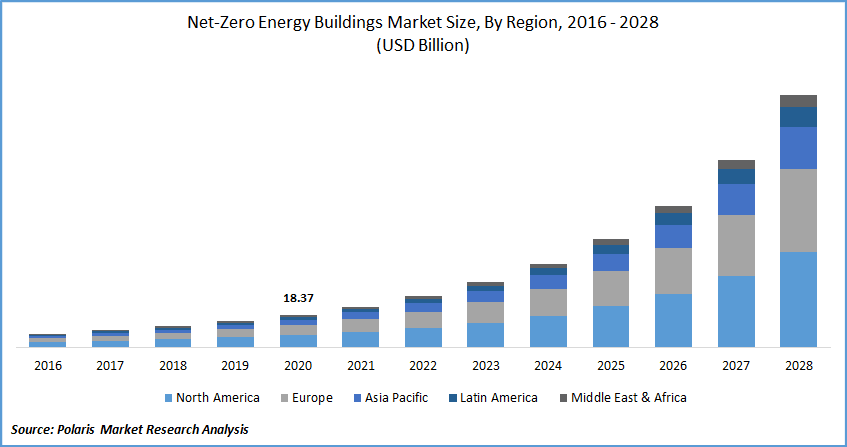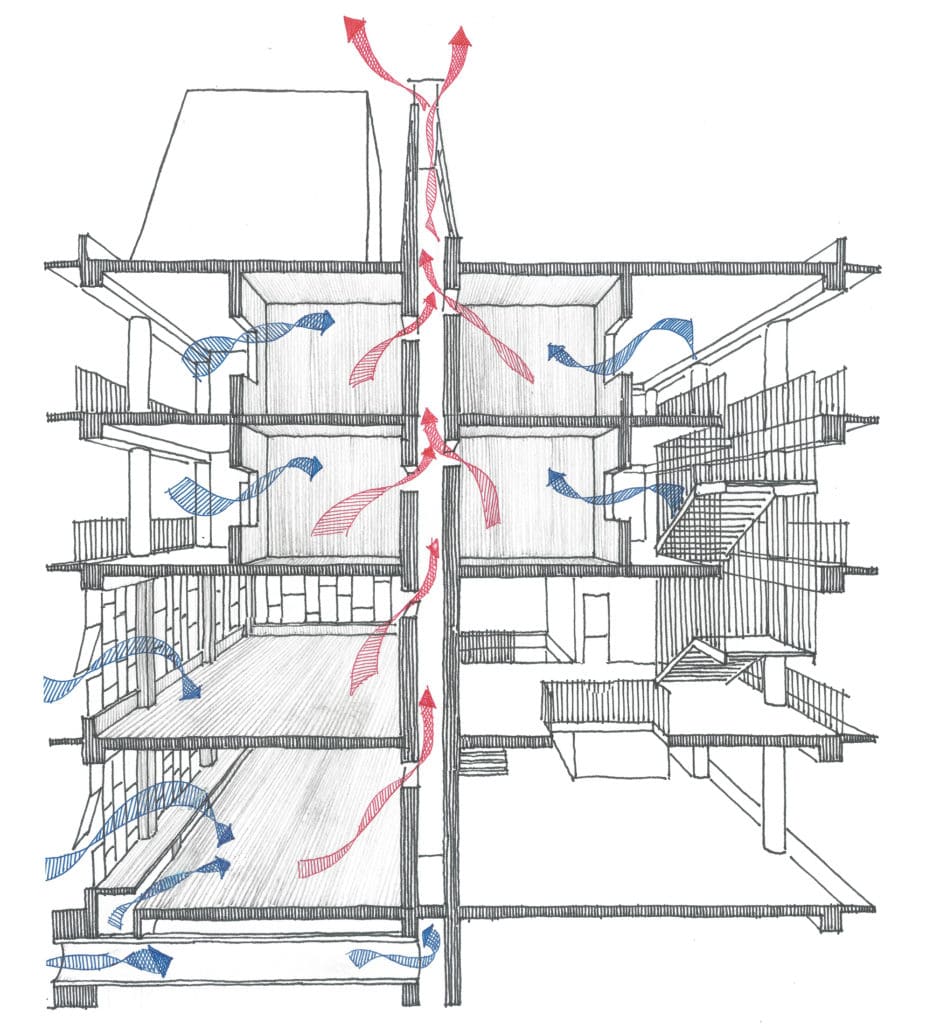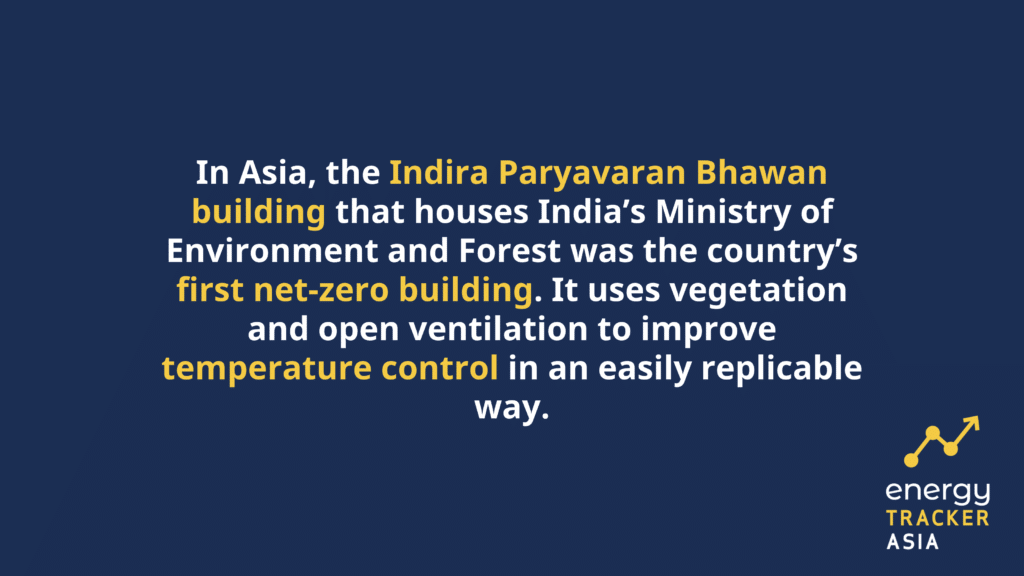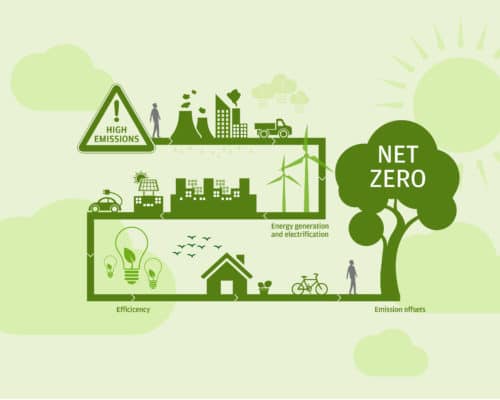Net-Zero Energy Buildings: A Stepping Stone to Decarbonisation
via ChutterSnap
13 April 2022 – by Eric Koons Comments (0)
As global governments shift toward decarbonising their economies, net-zero energy buildings are becoming more popular among developers. Most countries have set net-zero targets to lower greenhouse gas production and limit climate change impacts. An integral part of achieving these net-zero goals is reducing the amount of initially produced emissions and increasing renewable energy generation. This is done by using more renewable energy instead of fossil fuels, creating carbon offsets through sustainable forestry, and taking the energy efficiency measures regarding facilities and structures – like buildings.
What Does a Net-Zero Energy Building Look Like?
A net-zero building is a structure that balances its carbon emissions with carbon removal. Typically, installing local renewable energy systems and power storage is integral for these projects. The next part is increasing energy efficiency by using materials that maximise a building’s insulation, energy, and temperature control. Paired with smart technology, such as energy meters and heat sensors, net-zero buildings are cutting-edge and can generate revenue through energy production and storage. The purpose is to reduce energy consumption and energy cost, take advantage of natural ventilation and light, and build a nearly zero energy building.

However, we can also renovate existing buildings to be as efficient as possible. Installing renewables or sourcing energy from a renewable utility company is one way of reducing carbon emissions and energy costs. Another way is changing one’s heating and energy habits within a building by using smart technology and appliances.
How Do You Get a Net-Zero Energy Building?
Whether the building is a home, a small business or a large-scale operation, there are opportunities to create an energy-efficient building that meets net-zero goals. For example, optimising new developments by using passive solar heating and cooling stabilises the temperatures throughout the day. This, paired with energy-efficient heating, cooling, insulation, windows and appliances, ensures that a home is energy efficient. The exciting part about the concept is that it is entirely scalable. It can be applied to a small family home, a university campus or residential and commercial buildings.
How Many Net-Zero Energy Buildings Are There?
A 2017 report by the World Green Building Council (WorldGBC) – released before the adoption of net-zero goals by most world governments – showed that there were roughly 500 net-zero commercial buildings and 2,000 net-zero homes around the world. This represented under 1% of all buildings worldwide at the time, and WorldGBC noted that there was a need to ramp up efforts significantly.
However, the council pointed out that major net-zero development projects were underway in the report. The concept of net-zero buildings is becoming a mainstream ideology. The popularisation of net-zero in everyday life and business has led to a boom in net-zero developments. Estimates show that the zero energy building market will reach USD 47.4 billion by 2026.

Net-Zero Energy Building Examples
Several major net-zero buildings have caught the eye of developers and companies alike. The Unisphere in Maryland, USA, is a 135,000 square-foot building built in 2018 at the highest standard of sustainable net-zero technology and cutting-edge design. Also, in Colorado, the National Renewable Energy Laboratory (NREL) has a 362,055 square-foot campus that is LEED-certified, and it has won several awards for its energy efficiency.
In Asia, the Indira Paryavaran Bhawan building that houses India’s Ministry of Environment and Forest was the country’s first net-zero building. It uses vegetation and open ventilation to improve temperature control in an easily replicable way. Completed in 2020, the Avasara Academy in Pune, India, also used a similar approach.

Disadvantages of Net-Zero Buildings
While energy efficiency and net-zero energy buildings have a range of benefits, some limitations may affect their widespread adoption in the building sector Building costs are often expensive, considering the materials and technology needed. Also, the replacement or refurbishment of these systems can prove costly.
Renewable energy does not make up the majority of most electrical grids. Furthermore, in locations where the installation of sustainable, on-site power is not possible, the emissions profile of a building can be severely affected. Zero energy building costs can also be expensive, as certified building companies capable of carrying out the related construction may also be costly.
However, it is possible to offset the costs with long-term energy savings. These are all issues to consider before starting a net-zero energy building project.
Net-Zero Buildings Are the Future of Development
Net-zero buildings are the future of construction. Buildings all over the world are currently responsible for high amounts of carbon emissions and are overall very energy inefficient. The construction industry and the world will benefit by adopting more intuitive and environmentally friendly designs, materials, and systems.
Net-zero construction and energy-efficient buildings can significantly lower energy use and emissions, mitigate climate impacts, and help achieve net-zero goals when scaled across sectors.
Go further with Net-Zero
This article is part of our deep dive on Net-Zero by 2050.
In the related articles, we have discussed more related topics such as Carbon Neutral vs Net-zero.

by Eric Koons
Eric is a passionate environmental advocate that believes renewable energy is a key piece in meeting the world’s growing energy demands. He received an environmental science degree from the University of California and has worked to promote environmentally and socially sustainable practices since. Eric’s expertise extends across the environmental field, yet he maintains a strong focus on renewable energy. His work has been featured by leading environmental organizations, such as World Resources Institute and Hitachi ABB Power Grids.
Read more




